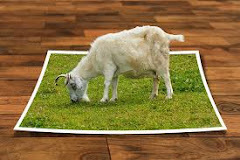Photoshop 3D Modeling Guide - Step By Step


1. At its core, graphic design is all about creating visual communication that connects with people in meaningful ways. This can be achieved through the use of different design elements such as color, typography, imagery, and layout. Graphic designers are responsible for creating visual concepts and designs that convey a message or tell a story.
2. Graphic designers can work in a variety of settings, from advertising agencies and design studios to in-house design departments and freelance work. They can specialize in different areas of design such as branding and identity design, print design, web design, user experience design, packaging design, and motion graphics.
3. One of the primary roles of a graphic designer is to understand and interpret the needs of their clients or target audience. This involves researching and analyzing their target market, understanding their brand identity, and determining what visual elements will best represent their message.
4. Once they have a clear understanding of the project requirements, graphic designers use their creative skills to develop visual concepts and design options. They use different software tools such as Adobe Illustrator, Photoshop, and InDesign to create designs that meet their clients' needs and requirements.
5. Graphic designers also need to have a strong understanding of design principles such as composition, balance, contrast, and harmony. These principles help them create designs that are visually appealing and effective in communicating the desired message.
6. In addition to technical skills, graphic designers also need to have excellent communication skills. They must be able to communicate their ideas and design concepts to their clients and team members effectively. This involves presenting their designs in a clear and concise manner and being able to explain the rationale behind their design decisions.
7. Another important aspect of graphic design is staying up-to-date with the latest design trends and technology. This requires continuous learning and keeping abreast of new design software, tools, and techniques.
In conclusion,
graphic designers are professionals who use their creative skills and technical expertise to create visual content that communicates messages effectively. They work in a variety of settings and specialize in different areas of design, such as branding, print, web, and packaging design. To be successful in this field, graphic designers need to have a strong understanding of design principles, excellent communication skills, and a willingness to continuously learn and adapt to new trends and technologies.
Comments
Post a Comment